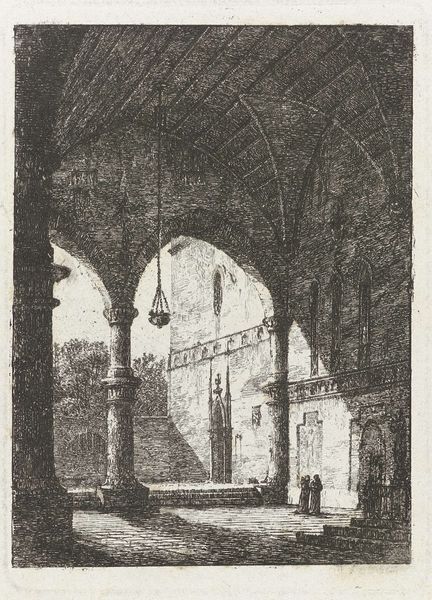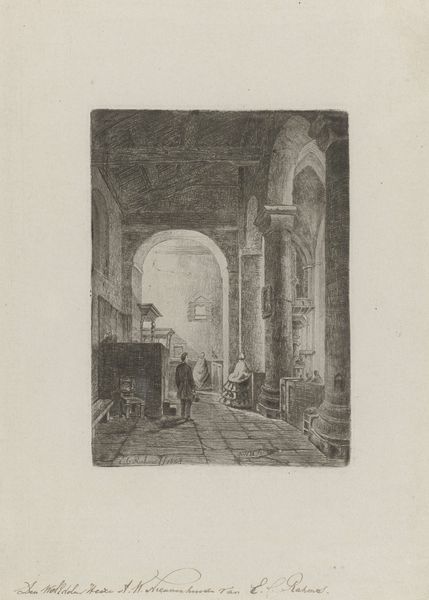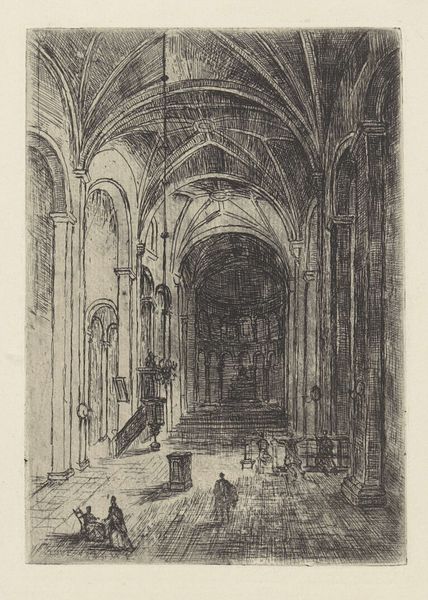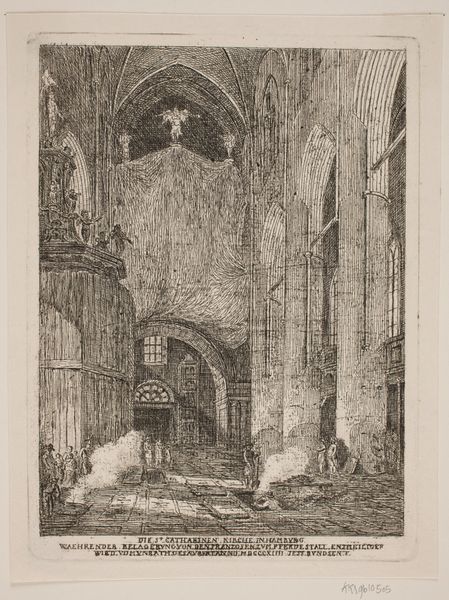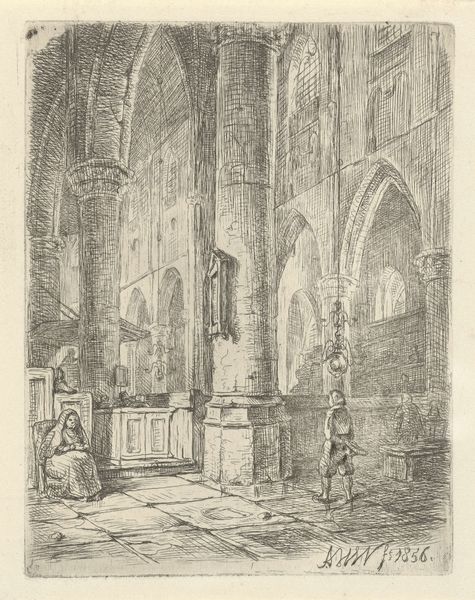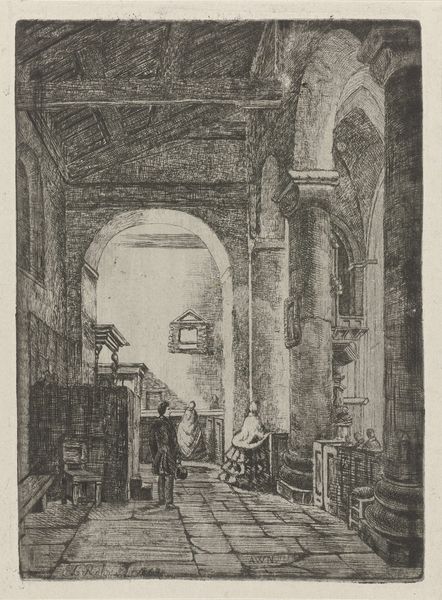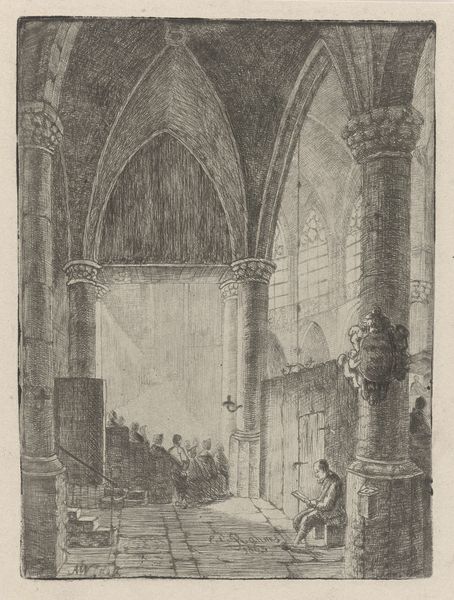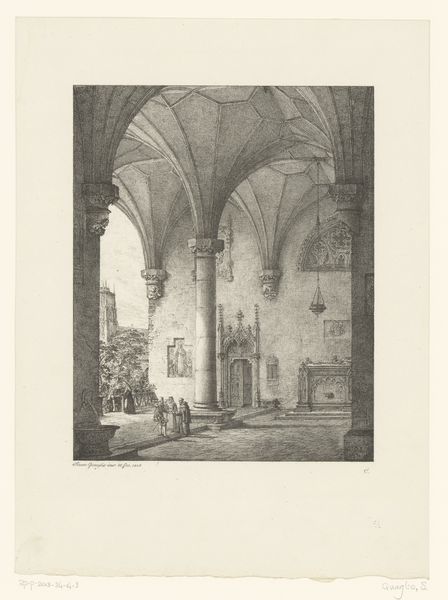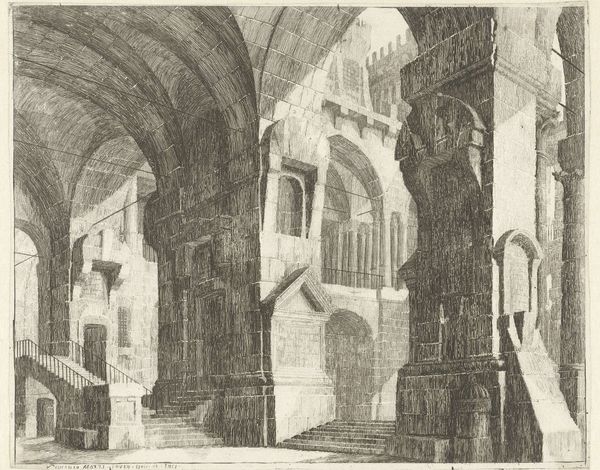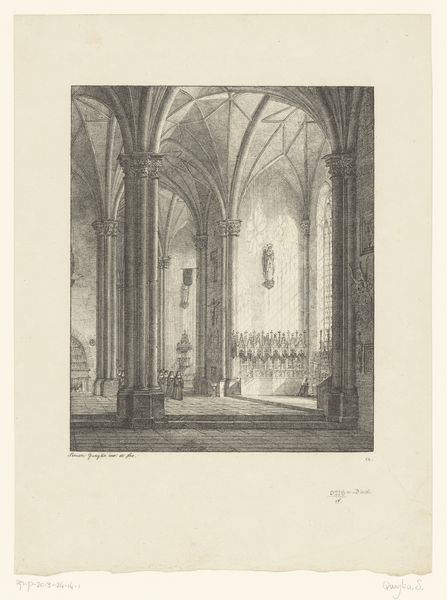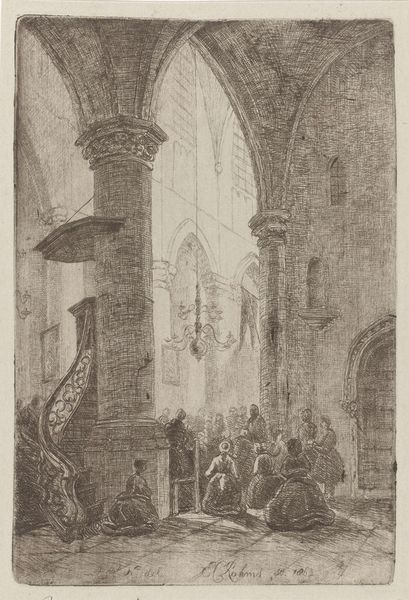
drawing, print, etching, ink
#
drawing
# print
#
etching
#
ink
#
genre-painting
Dimensions: height 135 mm, width 96 mm
Copyright: Rijks Museum: Open Domain
Curator: This print, housed here at the Rijksmuseum, is entitled "Moeder met kind in een kerkinterieur," or "Mother and Child in a Church Interior." It's attributed to Gijsbertus Johannes Verspuy and dates somewhere between 1833 and 1862. Editor: It has this wonderful solemn stillness to it, doesn't it? The way the figures are placed against those imposing columns, the light almost holding its breath. What process did Verspuy employ here? Curator: Well, it appears to be an etching. So, we are talking about a copper or zinc plate meticulously worked with needles to create those fine lines, then submerged in acid, and ultimately printed, transferring the composition in ink to paper. It speaks volumes about skilled labor and repetitive actions in the studio of an artist during the 19th century. Editor: It's fascinating how he uses this almost stark architecture as a stage to present the roles of women and their relationships within society during this time. Observe how the mother figure is framed by the structure – enclosed by cultural and religious spaces. Curator: The perspective really accentuates the grand scale, almost dwarfing the figures of the mother and child, it does present something about societal hierarchy. Editor: Precisely. And it makes you ponder, doesn't it, about who occupies sacred spaces? Are all welcomed equally, or does it perpetuate social constructs that favor one identity over others? Considering these representations within an historical context, how did these artistic decisions challenge—or reinforce—norms regarding gender or class? Curator: Indeed. Beyond that narrative element, you have to consider the etching itself—the materials available to Verspuy, his access to printmaking technology, the paper and ink...These are all parts that determine what reaches an audience and why this particular aesthetic gained appeal. Editor: Ultimately, the interplay of light, form, and narrative compels us to consider our role as observers, the act of looking shaped both by the past and by our very own social awareness. Curator: Looking into this print, its materials, labor, context—that makes appreciating the technical craft and its narrative impact so much richer for audiences today.
Comments
No comments
Be the first to comment and join the conversation on the ultimate creative platform.
